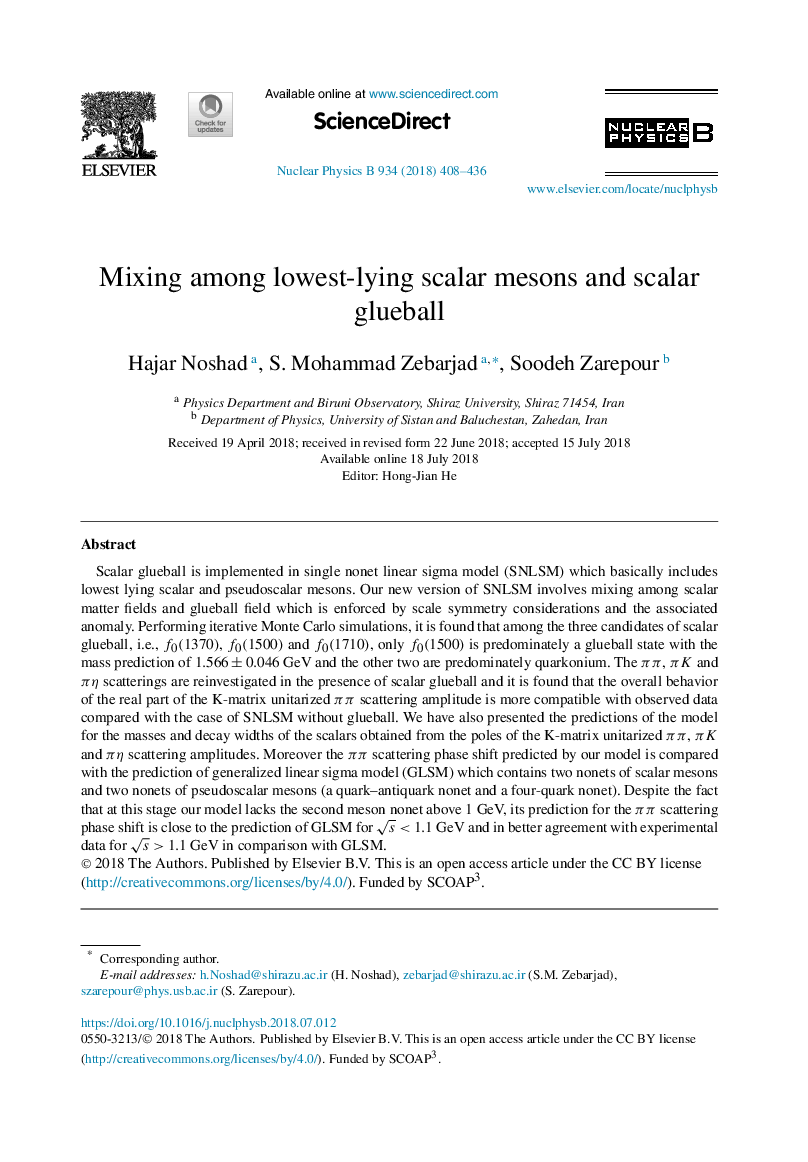| Article ID | Journal | Published Year | Pages | File Type |
|---|---|---|---|---|
| 8184814 | Nuclear Physics B | 2018 | 29 Pages |
Abstract
Scalar glueball is implemented in single nonet linear sigma model (SNLSM) which basically includes lowest lying scalar and pseudoscalar mesons. Our new version of SNLSM involves mixing among scalar matter fields and glueball field which is enforced by scale symmetry considerations and the associated anomaly. Performing iterative Monte Carlo simulations, it is found that among the three candidates of scalar glueball, i.e., f0(1370), f0(1500) and f0(1710), only f0(1500) is predominately a glueball state with the mass prediction of 1.566±0.046 GeV and the other two are predominately quarkonium. The ÏÏ, ÏK and Ïη scatterings are reinvestigated in the presence of scalar glueball and it is found that the overall behavior of the real part of the K-matrix unitarized ÏÏ scattering amplitude is more compatible with observed data compared with the case of SNLSM without glueball. We have also presented the predictions of the model for the masses and decay widths of the scalars obtained from the poles of the K-matrix unitarized ÏÏ, ÏK and Ïη scattering amplitudes. Moreover the ÏÏ scattering phase shift predicted by our model is compared with the prediction of generalized linear sigma model (GLSM) which contains two nonets of scalar mesons and two nonets of pseudoscalar mesons (a quark-antiquark nonet and a four-quark nonet). Despite the fact that at this stage our model lacks the second meson nonet above 1 GeV, its prediction for the ÏÏ scattering phase shift is close to the prediction of GLSM for s<1.1 GeV and in better agreement with experimental data for s>1.1 GeV in comparison with GLSM.
Related Topics
Physical Sciences and Engineering
Mathematics
Mathematical Physics
Authors
Hajar Noshad, S. Mohammad Zebarjad, Soodeh Zarepour,
